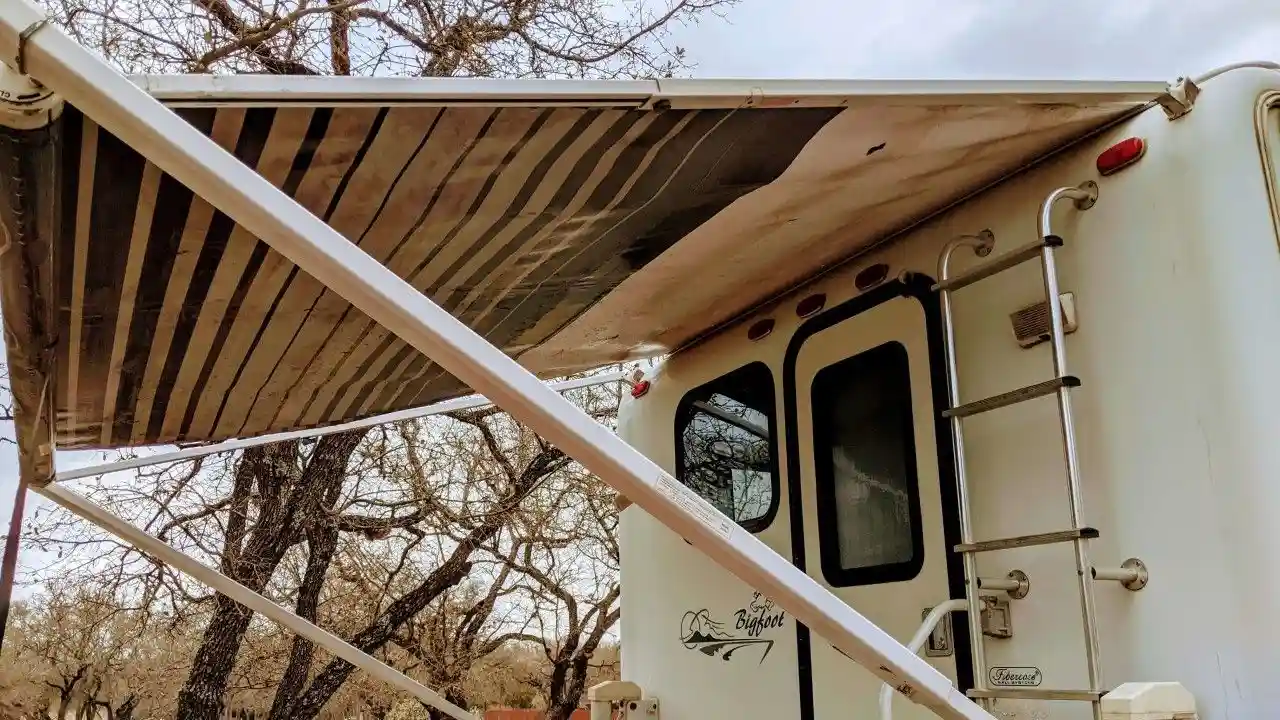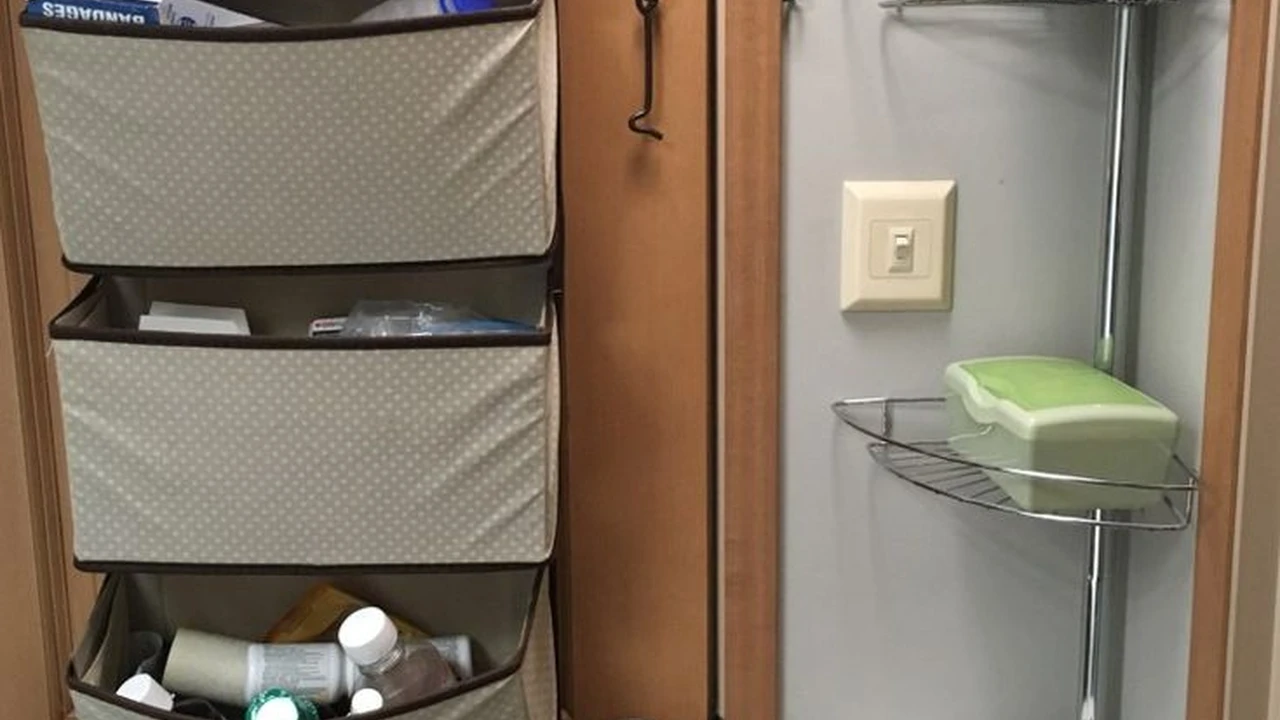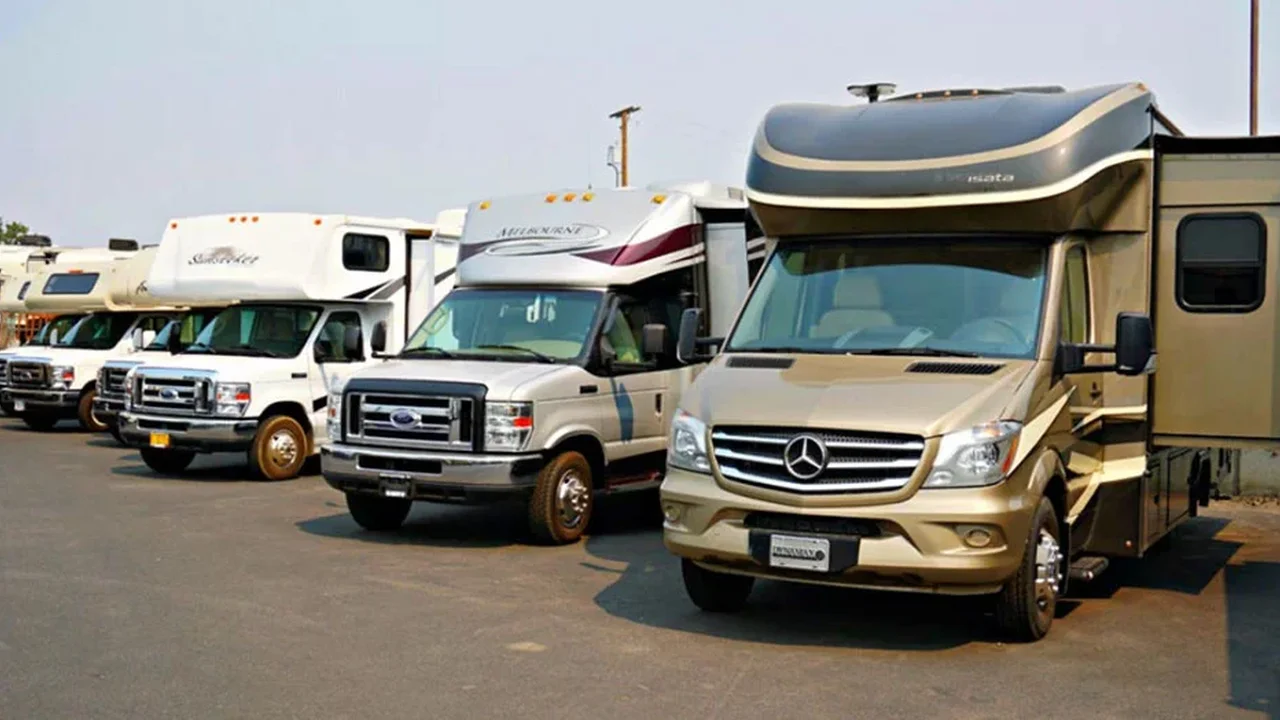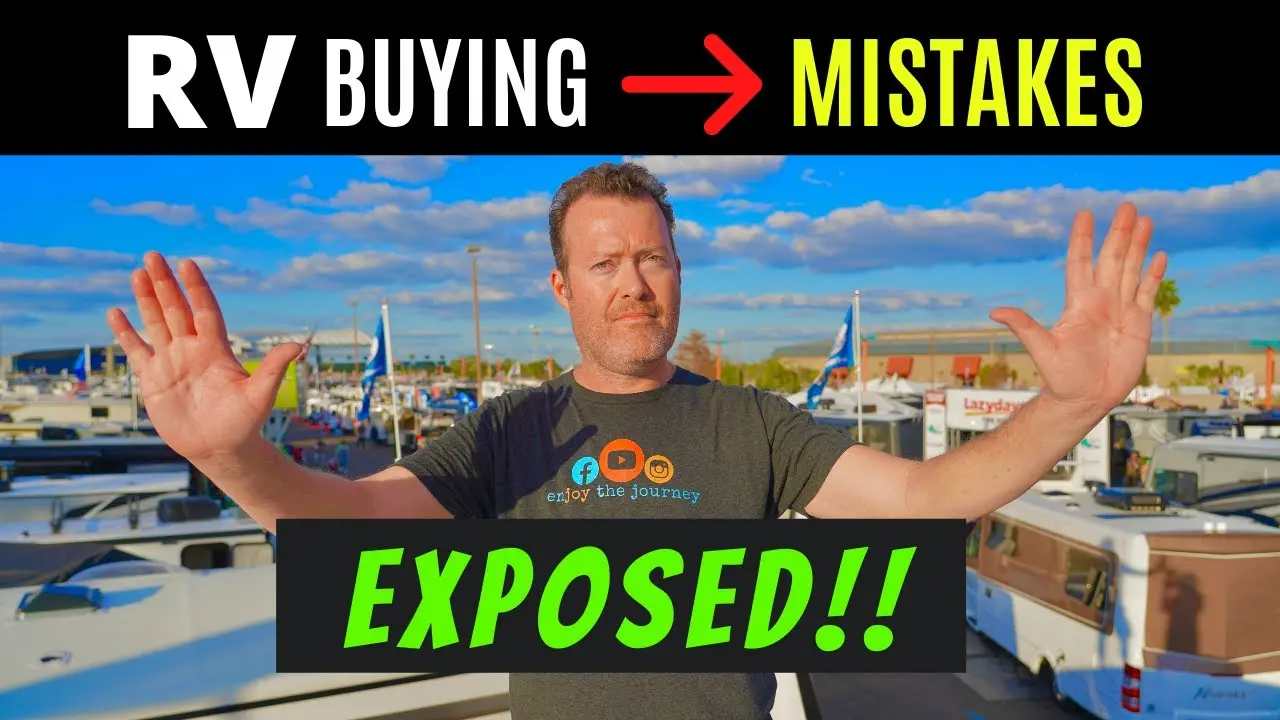RV Awning Repairs: Fixing Tears and Damage

Sample meta description: Comprehensive guide to RV water heater maintenance, troubleshooting common issues, and step-by-step repair instructions. Includes product recommendations and comparisons.
Understanding Your RV Water Heater A Comprehensive Overview
Let's dive deep into the heart of your RV's comfort system: the water heater. Often overlooked until it fails, your RV water heater is a critical appliance for enjoying hot showers, washing dishes, and general sanitation on the road. Understanding how it works, its components, and potential issues is the first step to keeping it running smoothly.
RV water heaters typically operate on either propane gas, electricity, or a combination of both. Propane models use a burner to heat the water, while electric models use an electric heating element. Combination models offer the flexibility to use either fuel source, depending on availability and your camping style.
Common sizes range from 6 to 12 gallons, with larger RVs sometimes equipped with even bigger units. The size you need depends on your water usage habits and the number of people traveling with you.
Regular maintenance is key to preventing problems and extending the lifespan of your RV water heater. This includes flushing the tank regularly to remove sediment buildup, inspecting the anode rod for corrosion, and checking the burner assembly and electrical connections for any signs of damage.
RV Water Heater Troubleshooting Common Problems and Solutions
Even with the best maintenance, RV water heaters can experience problems. Here are some common issues and how to troubleshoot them:
No Hot Water
This is perhaps the most frustrating problem. First, check the obvious: is the propane tank full? Is the electricity working? Then, investigate these potential causes:
- Faulty Thermostat: The thermostat controls the water temperature. If it's malfunctioning, it may not be sending power to the heating element or burner. Test the thermostat with a multimeter. If it's bad, replace it.
- Burned-Out Heating Element (Electric Models): The heating element is responsible for heating the water. Use a multimeter to check for continuity. If there's no continuity, the element is burned out and needs replacing.
- Clogged Burner (Propane Models): A clogged burner can prevent the propane from igniting. Clean the burner with a wire brush and compressed air.
- Faulty Gas Valve (Propane Models): The gas valve controls the flow of propane to the burner. If it's malfunctioning, the burner won't ignite. Test the gas valve with a multimeter. If it's bad, replace it.
- Tripped High-Limit Switch: The high-limit switch is a safety device that shuts off the water heater if it overheats. Reset the switch by pressing the reset button, usually located near the thermostat. If it keeps tripping, there's a more serious problem.
Water Not Hot Enough
If the water is lukewarm but not hot, consider these possibilities:
- Low Thermostat Setting: Make sure the thermostat is set to the desired temperature.
- Faulty Heating Element (Electric Models): A partially functioning heating element may not be able to heat the water to the desired temperature.
- Sediment Buildup: Sediment can insulate the heating element or burner, reducing its efficiency. Flush the tank thoroughly.
- Mixing Valve Issues: Some RVs have mixing valves that blend hot and cold water. A malfunctioning mixing valve can reduce the hot water temperature.
Leaking Water Heater
Leaks can indicate a serious problem. Address them immediately to prevent further damage.
- Loose Fittings: Check all fittings and connections for leaks. Tighten them if necessary.
- Cracked Tank: A cracked tank is often irreparable and requires replacing the entire water heater.
- Faulty Pressure Relief Valve: The pressure relief valve releases excess pressure. If it's leaking, it may need to be replaced.
- Anode Rod Corrosion: A severely corroded anode rod can cause leaks around the drain plug. Replace the anode rod.
Smelly Water
A rotten egg smell often indicates bacteria growth in the tank.
- Bacteria Contamination: Sanitize the tank by flushing it with a bleach solution (1/4 cup of bleach per 15 gallons of water). Let it sit for several hours, then flush thoroughly.
- Magnesium Anode Rod: Magnesium anode rods can react with certain water types, producing hydrogen sulfide gas, which causes the smell. Consider switching to an aluminum anode rod.
Noisy Water Heater
Banging or popping noises usually indicate sediment buildup.
- Sediment Buildup: Flush the tank thoroughly to remove sediment. A water heater cleaning wand can be helpful.
RV Water Heater Maintenance Essential Tips for Longevity
Preventive maintenance is crucial for extending the life of your RV water heater and avoiding costly repairs. Here's a comprehensive maintenance checklist:
Flushing the Tank Regularly
Sediment buildup is the biggest enemy of RV water heaters. Flush the tank at least twice a year, or more frequently if you use your RV extensively or camp in areas with hard water. To flush the tank:
- Turn off the water heater and let the water cool completely.
- Turn off the water supply to the RV.
- Open the pressure relief valve.
- Remove the drain plug.
- Use a water heater cleaning wand to dislodge sediment.
- Flush the tank with fresh water until the water runs clear.
- Replace the drain plug and close the pressure relief valve.
- Turn on the water supply and allow the tank to fill completely.
- Turn on the water heater.
Inspecting and Replacing the Anode Rod
The anode rod is a sacrificial metal rod that protects the tank from corrosion. It corrodes instead of the tank, extending the life of the water heater. Inspect the anode rod at least once a year and replace it when it's significantly corroded (usually when it's reduced to about 1/3 of its original size). To inspect and replace the anode rod:
- Turn off the water heater and let the water cool completely.
- Turn off the water supply to the RV.
- Drain the water heater.
- Remove the anode rod (usually located near the drain plug).
- Inspect the anode rod for corrosion.
- If the anode rod is corroded, replace it with a new one.
- Wrap the threads of the new anode rod with Teflon tape.
- Install the new anode rod and tighten it securely.
- Fill the water heater with water.
- Turn on the water heater.
Checking the Burner Assembly (Propane Models)
For propane models, regularly inspect the burner assembly for dirt, debris, and corrosion. Clean the burner with a wire brush and compressed air. Also, check the gas line connections for leaks using a soapy water solution.
Inspecting Electrical Connections (Electric Models)
For electric models, inspect the electrical connections for loose wires or corrosion. Tighten any loose connections and clean any corrosion with a wire brush.
Winterizing Your RV Water Heater
If you live in an area with freezing temperatures, it's essential to winterize your RV water heater to prevent damage from freezing water. To winterize your RV water heater:
- Turn off the water heater and let the water cool completely.
- Turn off the water supply to the RV.
- Drain the water heater completely.
- Bypass the water heater using the bypass valve (if equipped).
- Add RV antifreeze to the water lines.
RV Water Heater Repair Step-by-Step Guides for Common Issues
While some repairs are best left to professionals, many common RV water heater problems can be fixed with a little know-how and the right tools. Here are some step-by-step guides for common repairs:
Replacing a Heating Element (Electric Models)
- Turn off the power to the water heater at the circuit breaker.
- Drain the water heater completely.
- Remove the access panel to the heating element.
- Disconnect the wires from the heating element.
- Use a heating element wrench to remove the old heating element.
- Wrap the threads of the new heating element with Teflon tape.
- Install the new heating element and tighten it securely.
- Reconnect the wires to the heating element.
- Replace the access panel.
- Fill the water heater with water.
- Turn on the power to the water heater at the circuit breaker.
Cleaning a Burner Assembly (Propane Models)
- Turn off the propane supply to the water heater.
- Remove the access panel to the burner assembly.
- Disconnect the gas line from the burner assembly.
- Remove the burner assembly.
- Clean the burner with a wire brush and compressed air.
- Inspect the burner for any cracks or damage. Replace it if necessary.
- Reinstall the burner assembly.
- Reconnect the gas line to the burner assembly.
- Check for gas leaks using a soapy water solution.
- Replace the access panel.
- Turn on the propane supply to the water heater.
Replacing a Thermostat
- Turn off the power to the water heater (both propane and electric if applicable).
- Drain the water heater slightly, enough to expose the thermostat.
- Remove the access panel to the thermostat.
- Disconnect the wires from the thermostat. Note their positions for reassembly.
- Remove the old thermostat.
- Install the new thermostat.
- Reconnect the wires to the thermostat, ensuring they are in the correct positions.
- Replace the access panel.
- Refill the water heater.
- Turn on the power to the water heater.
Replacing a Pressure Relief Valve
- Turn off the water heater and allow it to cool.
- Turn off the water supply to the RV.
- Drain the water heater.
- Use a wrench to remove the old pressure relief valve.
- Apply Teflon tape to the threads of the new pressure relief valve.
- Install the new pressure relief valve and tighten it securely.
- Fill the water heater with water.
- Turn on the water heater and check for leaks.
RV Water Heater Product Recommendations Top Choices for Performance and Reliability
Choosing the right RV water heater can make a big difference in your camping experience. Here are some top product recommendations based on performance, reliability, and features:
Suburban SW6D 6-Gallon RV Water Heater (Propane)
Description: A popular and reliable propane water heater known for its durability and efficient heating. It features a porcelain-lined steel tank for long-lasting protection against corrosion. Its compact design makes it suitable for various RV sizes.
Use Cases: Ideal for RVers who primarily camp with propane hookups and need a dependable hot water source.
Pros: Durable construction, efficient heating, easy to install.
Cons: Only operates on propane, no electric option.
Pricing: Approximately $300 - $400.
Atwood GC6AA-10E 6-Gallon RV Water Heater (Propane/Electric)
Description: A versatile water heater that operates on both propane and electric, offering flexibility for different camping situations. It features a lightweight aluminum tank and a direct spark ignition system.
Use Cases: Suitable for RVers who want the flexibility to use either propane or electric for heating water, depending on hookups and energy availability.
Pros: Dual fuel operation, lightweight aluminum tank, direct spark ignition.
Cons: Aluminum tank may be more susceptible to damage than steel tanks.
Pricing: Approximately $400 - $500.
Truma AquaGo Comfort Plus RV Water Heater (Tankless)
Description: A tankless water heater that provides continuous hot water on demand. It's energy-efficient and eliminates the need for a storage tank. Features include automatic descaling and precise temperature control.
Use Cases: Perfect for RVers who want unlimited hot water and are willing to invest in a premium water heating system. Good for boondocking where water conservation is key.
Pros: Continuous hot water, energy-efficient, compact design, automatic descaling.
Cons: Higher initial cost, requires a strong propane supply.
Pricing: Approximately $1,200 - $1,500.
Girard 2GWHAM Tankless RV Water Heater
Description: Another tankless option, the Girard 2GWHAM is known for its compact size and easy installation. It delivers hot water quickly and efficiently.
Use Cases: Similar to the Truma, this is a good choice for those seeking unlimited hot water and space savings.
Pros: Compact, easy installation, instant hot water.
Cons: Can be sensitive to low water pressure.
Pricing: Approximately $800 - $1,000.
RV Water Heater Comparison Propane vs Electric vs Tankless
Choosing the right type of RV water heater depends on your individual needs and camping style. Here's a comparison of propane, electric, and tankless models:
Propane Water Heaters
Pros:
- Relatively inexpensive.
- Heat water quickly.
- Can be used off-grid.
Cons:
- Require propane.
- Can be noisy.
- Need proper ventilation.
Electric Water Heaters
Pros:
- Quiet operation.
- No propane required (when shore power is available).
Cons:
- Slower heating than propane.
- Require shore power or a generator.
- Can drain batteries quickly if used extensively.
Tankless Water Heaters
Pros:
- Unlimited hot water.
- Energy-efficient.
- Compact design.
Cons:
- Higher initial cost.
- Require a strong propane supply (for propane models).
- Can be sensitive to low water pressure.
RV Water Heater Safety Precautions Ensuring Safe Operation
Safety should always be your top priority when dealing with RV water heaters. Here are some essential safety precautions:
- Never operate the water heater without water in the tank. This can damage the heating element or burner.
- Ensure proper ventilation. Propane water heaters produce carbon monoxide, so ensure adequate ventilation to prevent carbon monoxide poisoning.
- Inspect the gas line connections regularly for leaks. Use a soapy water solution to check for leaks.
- Never attempt to repair a water heater if you're not comfortable working with electricity or propane. Consult a qualified RV technician.
- Install a carbon monoxide detector in your RV. Test it regularly.
- Keep flammable materials away from the water heater.
- Follow the manufacturer's instructions carefully.
RV Water Heater Cost Considerations Budgeting for Maintenance and Repairs
Understanding the costs associated with RV water heaters can help you budget for maintenance and repairs. Here's a breakdown of potential expenses:
- Anode Rod Replacement: $20 - $50 (replace annually or bi-annually).
- Heating Element Replacement: $30 - $70 (electric models).
- Thermostat Replacement: $20 - $50.
- Pressure Relief Valve Replacement: $15 - $30.
- Burner Assembly Cleaning: $0 (DIY) or $50 - $100 (professional).
- Professional Repair: $100 - $300 per hour.
- Water Heater Replacement: $300 - $1500 (plus installation).
Regular maintenance can help you avoid costly repairs. Factor in the cost of anode rod replacements and tank flushing supplies when budgeting for your RV's upkeep.
Optimizing RV Water Heater Efficiency Maximizing Hot Water Usage
Getting the most out of your RV water heater involves optimizing its efficiency. Here are some tips:
- Take shorter showers.
- Install a low-flow showerhead.
- Wash dishes efficiently. Consider using a basin to conserve water.
- Turn off the water heater when not in use. Especially when boondocking.
- Insulate the water heater tank. This can help reduce heat loss. Some RVs come with insulation blankets pre-installed; consider adding one if yours doesn't.
- Use the electric element when available. If you have shore power, use the electric element instead of propane to save on propane costs.
RV Water Heater Alternative Solutions Exploring Other Options
While traditional RV water heaters are the most common choice, there are alternative solutions to consider:
Portable Water Heaters
Portable water heaters are a good option for smaller RVs or tent campers. They are typically propane-powered and provide hot water on demand. They're ideal for quickly heating water for washing dishes or taking a quick shower.
Solar Water Heaters
Solar water heaters use solar panels to heat water. They are environmentally friendly and can save on energy costs. However, they require sunlight and may not be suitable for all climates.
On-Demand Electric Showers
These compact units heat water instantly as it passes through, providing a continuous stream of hot water. They require a significant amount of electrical power and are best suited for RVs with robust electrical systems.
RV Water Heater Legal Considerations and Regulations
While RV water heaters don't typically have stringent legal regulations, it's important to be aware of some considerations:
- Propane Safety: Always follow safety guidelines when working with propane. Ensure proper ventilation and check for leaks regularly.
- Electrical Safety: Follow electrical safety codes when working with electrical components. Disconnect power before performing any repairs.
- Water Quality: Ensure the water you're using is safe for drinking and bathing. Consider using a water filter.
- Waste Water Disposal: Dispose of waste water properly. Never dump grey water indiscriminately. Use designated dump stations.
RV Water Heater Future Trends Innovations in Water Heating Technology
The RV water heater industry is constantly evolving. Here are some future trends and innovations to watch out for:
- Smart Water Heaters: Smart water heaters can be controlled remotely via a smartphone app. They can also learn your usage patterns and adjust the heating schedule accordingly to save energy.
- Hybrid Water Heaters: Hybrid water heaters combine the benefits of tank and tankless models. They have a small storage tank and a tankless heating element, providing both instant hot water and energy efficiency.
- More Efficient Heating Elements: Manufacturers are developing more efficient heating elements that use less energy to heat water.
- Improved Tank Materials: New tank materials are being developed that are more durable and resistant to corrosion.
By staying informed about these trends, you can make informed decisions about your RV water heating system and ensure that you're getting the best possible performance and efficiency.
:max_bytes(150000):strip_icc()/277019-baked-pork-chops-with-cream-of-mushroom-soup-DDMFS-beauty-4x3-BG-7505-5762b731cf30447d9cbbbbbf387beafa.jpg)





